The introduction to Air Combat chaos.
Exercise Red Flag 24-1 gets underway at Nellis Air Force Base, Nevada.
Article: Jaryd Stock
Imagery: Chris Amendola, John Wilson
The United States Air Force, U.S. Marnies, U.S. Navy, Royal Australian Air Force and the Royal Air Force is currently involved in the world’s toughest air combat training environment during Exercise Red Flag 24-1, Held from 15th of January to the 2nd of February at Nellis Air Force Base in Nevada, USA.
The exercise has been in existence since 1975 and is designed to effectively introduce air combat chaos to the crews participating in the exercise and will involve approximately 75 aircraft participating in a number of sorties conducting Defensive and Offensive Counter air operations or “evoles” for 90 minutes at a time both day and night.
Building the exercise takes a year long cycle to plan for exercise Red Flag, and with recent events where coalition aircraft from the United States and United Kingdom have taken part in sorties against ground targets in Yemen, the lessons learnt from those real world combat scenarios is something most likely will be introduced to the frame work of the exercise later in the year at another iteration of Red Flag.
The exercise does evolve over the years to address whatever the current need with a series of planning events that leads up to each of the three Red Flag exercises carried out at Nellis. This iteration of the exercise focuses more of Indo-Pacific flair to the missions being carried out, especially since all three countries have signed onto the AUKUS agreement back in 2022.
An important piece of Red Flag is that ninety eight percent of the exercise is focused on fielding and developing equipment and tactics and the the exercise is designed for the aircrews to come together and work in a simulated air combat chaos, as it were, with the equipment they are operating in.
But that equipment has been evolving each year the exercise has been operating and with the F-16 Viper being in operations with the USAF for the last fifty years with new capabilities being introduced such as new weapons or new sensors and thus developing ways of networking those older airframes with new 5th generation aircraft such as F-22 and F-35, so developing new tactics is critical to cater for those improvements in technology.

Since 1980, generations of Royal Australian Air Force aviators have come to this exercise, which continues to evolve and reflect the threats and challenges faced on modern operations, this exercise marked the first time Australian F-35A Lightnings from No.3 Squadron nicknamed “The Fast Flying Fighting 3rd” based at RAAF Base Williamtown participated in the exercise, the squadron bringing six aircraft and 150 personnel to Nevada.
Former RAAF Roulette who has moved over from the PC-9/21 to flying the F-35, Flight Lieutenant (FLTLT) Dan Armstrong spoke to APD on the line at Nellis explaining the objectives that are hoping to be achieved at this exercise.
“Missions are conducted at the nearby Nevada Test and Training Range which is around one hundred and fifty mile wide bit of realestate which the OCA and DCA missions can be conducted in a safe manner, and further to the southwest of the United States where we can integrate with maritime units.”
“So the real big advantage of the F-35 is stealth where we can get close to our objectives, and we can conduct surface to air missions and air to air missions and for us here we get to mix various aircraft together and using everyones strengths for instance the USAF have the F-22 which is great at air superiority, and we are really good at suppression of enemy air defence, mixing those two together especially with the assets here for the exercise that really is the challenge at Red Flag.” Says FLTLT Armstrong.
“The advantage of coming to Nevada is we never really get to work with the B-2A (Spirit) or the B-52H (Stratofortress) bombers that are currently here at Nellis participating, and so it has taken a week for all of us to get to know how each other works and overcome the language barriers that are presented.”
What the RAAF hope to get out of every Exercise Red Flag is test every facet of F-35A capabilities employed, allowing them to integrate with their American and British allies, and practise how they project their forces on combat operations especially in the Indo-Pacific region even though its a relatively small air force compared to the USAF.
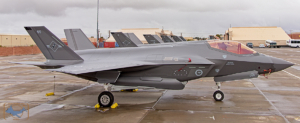
FLTLT Armstrong stated, “we can train at home and we can defend Australia but if we are ever under the threat of war we really need to integrate with our partner nations, because its them we will be with standing shoulder to shoulder with and so it’s critical here that we get our training in this sort of environment.”
Another RAAF asset on the ground during the exercise is the radar surveillance and air defence unit based at RAAF Base Darwin. Wing Commander Peter Mole, Commanding Officer of No. 114 Mobile Control and Reporting Unit, is leading the RAAF Tactical Command and Control Team in the exercise.
“There is a large number of aircraft around 150, all fulfilling different roles across each mission at Exercise Red Flag Nellis, but no single aircraft is the ‘silver bullet’ that can do it all alone,” Wing Commander Mole said.
“The tactical command and control team’s role is to manage and control all of those aircraft, alongside other elements and units working in the ground, maritime, cyber and space-based domains, to accomplish the mission.
Elsewhere on the ground was also another avenue for crews to work together, USAF and RAAF personnel honed their interoperability skills by participating in a combined Guided Bomb Unit build during Red Flag 24-1.
Through effective communication and the interchange of tactics, techniques, and procedures between U.S. and RAAF forces, they successfully manufactured eight Inert GBUs for the F-35A Lightning II in a single day.
“Participating in Red Flag 24-1 is important for future missions because it has helped us become more familiar with how we and the United States work together,” said Corporal Matthew Parsell, RAAF weapons technician.
“This opportunity gave us the confidence that we can integrate with any USAF weapon preparation teams abroad and build weapons quickly and effectively, utilizing a range of different team compositions from either nation.”

The 414th Combat Training Squadron conducts Red Flag exercises to provide aircrews the experience of multiple, intensive air combat sorties in the safety of a training environment. This iteration of Red Flag provides unique training with an emphasis on readiness for high-end warfighting and strategic competition.
“Training prioritizes first timer’s combat missions, mission commander upgrades, integration and flag unique experiences that contribute most to readiness and partnering,” said Col. Eric Winterbottom, 414th CTS commander.
“Participants will engage the 57th Wing’s professional aggressors, integrate with coalition core function forces, and learn keeping faith with Airman through personnel recovery operations,” said Winterbottom.
Winterbottom continued by stating this training is critical to enabling Airmen to function independently making the mission more resilient and survivable. “Participants will lead and learn in the world’s best combat debrief, while writing the next chapter of the Red Flag’s heritage,” said Winterbottom.
The 414th CTS hosts Red Flag with a mission to maximize the combat readiness, capability, survivability and interoperability of participating units. They provide realistic, multi-domain training in a combined air, ground, space and electronic threat environment while providing opportunities for a free exchange of ideas between forces.
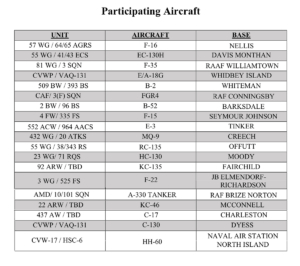



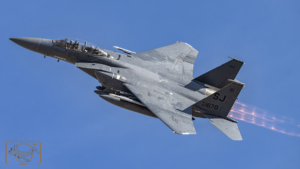





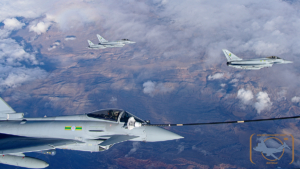








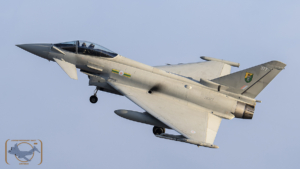

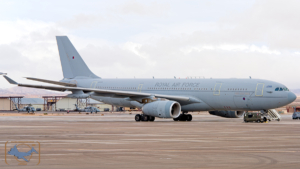


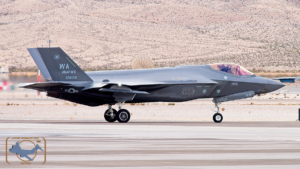

FOR EXTRA VIEWING:
Jaryd Stock is based in Sydney Australia. He has been a die-hard aviation enthusiast from a young age when he was chauffeured around by his father to various airshows and airports around Australia. At his first Airshow he witnessed the awesomeness of a General Dynamics F-111C and immediately fell in love with aviation.
Jaryd picked up a camera at a young age and has never looked back. He now combines photography and writing to highlight “Downunder” aviation; especially U.S. DoD units. Jaryd uses Nikon cameras and lenses.

